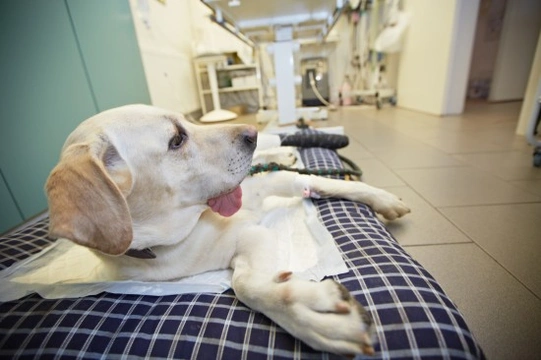
Dogs and Hypoalbuminemia
The albumin levels in the blood of the dog are responsible for controlling the pressure of the blood, and regulating the volume of blood within the body. It is also important for maintaining the fluid levels in the vascular compartment, which is vital for healthy heart function.
When the albumin levels in the blood of the dog are lower than they need to be, the condition known as hypoalbuminemia develops. The albumin levels of the blood are dictated by the liver, produced by the protein that forms there. Deficiency of these albumin levels or hypoalbuminemia can be very serious for the dog, leading to a dangerously high build up of fluid. This condition can potentially affect any type dog, and is not breed specific or prone to happen to any particular gender of dog, or to dogs above a certain age.
What causes hypoalbuminemia in the dog?
Hypoalbuminemia is usually a symptom of another condition, which leads to a wide range of problems and imbalances within the body as a whole. There is no one condition that is particularly prone to causing hypoalbuminemia, but it is commonly associated with a range of other conditions, including:
- Hepatitis, cirrhosis of the liver, or other chronic liver conditions
- Malnutrition or insufficient water intake
- Immune-related renal diseases
- Amyloidosis
- Intestinal diseases
- Lymphoma
- Particularly severe inflammatory bowel disease
- Fungal diseases
- Skin sores
- Severe blood loss
- A large build-up of fluid in the abdomen
- Peritonitis
- Pancreatitis
- Vasculopathies
- Pyothorax
- Infectious diseases such as tick fever or sepsis
- Chylous
Symptoms of hypoalbuminemia in dogs
Hypoalbuminemia in dogs may be either acute or chronic, meaning that it can be slow to develop or, in some cases, come on quickly. It will rarely develop as a standalone condition without the presence of one of the above-listed problems leading to the condition, but of course, it is not always possible to know in advance if another condition is also in play.
Some of the most common and marked symptoms of hypoalbuminemia in the dog include:
- Diarrhoea and vomiting
- Breathing problems, such as laboured breathing
- Swollen paws and/or limbs
- Distension of the abdomen
- Swelling without apparent cause on various parts of the body
How is hypoalbuminemia in dogs diagnosed?
As hypoalbuminemia itself can be caused by a wide range of other underlying conditions, your vet will usually go through a process called “differential diagnosis,” which works on the principle of considering every possible cause of the condition and ruling them out one by one, until only one remains.
In order to do this, your vet will need to firstly confirm that the albumin count of the blood itself is low by means of a complete blood panel analysis and urinalysis, plus taking a history of your dog and looking at the presenting symptoms.
Once your vet begins to narrow down the diagnosis, additional tests such as x-rays, ultrasound examination and biopsies of the kidney and liver may be required too.
Treating hypoalbuminemia in the dog
In order to treat the underlying cause of the hypoalbuminemia itself, your vet will first need to identify and treat the condition that has led to its development. In order to perform the necessary tests and begin prompt treatment, as well as taking care of your dog in the meantime, this may mean that your dog will need an inpatient stay at the clinic.
Your dog will also be stabilised, and treated to ease the symptoms and any associated complications of the condition, such as draining fluid from the lungs or abdominal cavity, or administering IV fluid therapy. Your dog may also be given painkillers, and other medications to treat the underlying condition.
Physical therapy is also important for affected dogs, in order to encourage draining of excess fluids and to reduce swelling of the limbs, if present. Your dog will also prescribe a special diet for your dog once they are able to eat normal foods again.
Managing the condition
Precisely what is required in the long term to manage the condition and how your dog recovers from it will depend greatly on the condition that led to the illness in the first place, and how this is treated. Your vet will need to see your dog regularly even after they are discharged from the clinic, in order to monitor their weight and how the build-up of fluids that the condition caused is reducing itself.
It is also important to keep a check on the heart health of the affected dog, and ensure that it is functioning properly in the wake of the condition. Gentle exercise and a slow, steady recovery is vitally important to resolving the condition, as is following your vet’s advice on how to take care of your dog once they get home.



